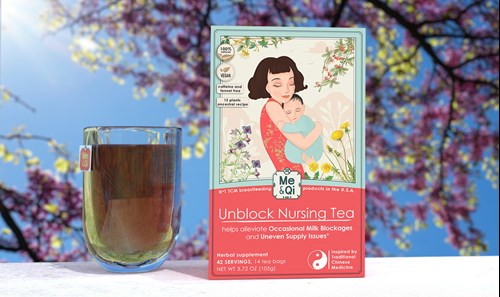Contents
- What Is Epsom Salt Clogged Duct?
- Why Epsom Salt Is Able To Treat Clogged Milk Duct?
- How To Use Epsom Salt For Clogged Milk Duct?
- Any Substitute For Epsom Salt For Clogged Milk Duct?
- What do I do if my clogged milk duct won't unclog?
What Is Epsom Salt Clogged Duct?
Epsom salt is a chemical compound made up of magnesium, sulfur, and oxygen, with the formula MgSO4. It is also known as magnesium sulfate.
It is chemically different from the common table salt (sodium chloride) that we consume in our daily diets. It is important to note that it should not be ingested and should only be used externally.
Epsom salt is commonly used as a home remedy for various ailments, including sore muscles, skin conditions, or constipation.
It is also known to be beneficial in some breastfeeding issues such as clogged milk duct when it is combined with warm water and gentle massage, as it can help to reduce inflammation and potentially aid in clearing the blockage.
Why Epsom Salt Is Able To Treat Clogged Milk Duct?
- Reducing inflammation:
Epsom salt has anti-inflammatory properties that can help reduce swelling and inflammation around the clogged duct. This, in turn, can make it easier for the milk to flow through the duct and relieve the blockage.
- Promoting relaxation:
When combined with warm water, Epsom salt can help relax the muscles and tissues surrounding the clogged milk duct. This relaxation can help relieve tension and make it easier for the milk to pass through the duct.
- Drawing out impurities:
Epsom salt can also help draw out impurities from the affected area, which may aid in unclogging the milk duct.
- Enhancing the effectiveness of other treatments:
Epsom salt can be used in conjunction with other methods, such as warm compresses, gentle massage, and the Haakaa pump, to increase the effectiveness of these treatments in clearing the clogged milk duct.
How To Use Epsom Salt For Clogged Milk Duct?
1. Haakaa with Epsom salt
Mix 1-2 tablespoons of Epsom salt with warm water, pour it into the Haakaa pump, attach it to the affected breast, and leave it on for 10-15 minutes. It creates a vacuum which can gently suck the clog out. Read this detailed guide on how to perform Haakaa with Epsom salt.
Its anti-inflammatory properties can help reduce swelling and inflammation associated with clogged milk ducts.
Also, the combination of warm water and Epsom salt creates a soothing solution that can help relax the breast tissue and facilitate the flow of milk through the ducts.
Furthermore, when used with Haakaa's gentle suction, the Epsom salt solution aids in softening and loosening the clog, making it easier to remove.
2. Breast massage with Epsom salt
Epsom salt and breast massage can effectively remove a clogged milk duct by combining their benefits.
Epsom salt, when mixed with warm water, its magnesium content reduces inflammation and soothes the muscle and tissue around the clogged breast area. Breast massage breaks up the blockage, encouraging milk flow and promoting clog removal.
Using both methods together involves soaking a washcloth in an Epsom salt solution, applying it to the affected area, and then gently massaging the breast to remove the clog. Nursing or pumping during the process can also help with milk flow and clog removal.
Check out this comprehensive article on massage techniques for effectively addressing clogged milk ducts and mastitis.
3. Relieve itching and peeling skin on the nipple and breast
Itching and peeling skin may sometimes accompany clogged milk ducts as a result of skin tightness caused by the overfilled breast ducts trapping milk. This additional pressure forces the skin to stretch to accommodate the excess milk.
Epsom salt can help relieve skin itching or peeling thanks to the beneficial properties mentioned above:
-
- Anti-inflammatory:
It contains magnesium, which is known for its anti-inflammatory effects. This property helps reduce inflammation and irritation on the skin, thus alleviating itching and peeling caused by clogged milk ducts.
-
- Exfoliation:
Epsom salt has a slightly abrasive texture, which can help remove dead skin cells and promote the healing of peeling skin. Gentle exfoliation can also reduce itching by removing irritants on the skin's surface.
-
- Soothing effect:
The magnesium in Epsom salt can help soothe the skin and reduce irritation. When combined with warm water, it can provide a calming sensation that alleviates itching and discomfort.
-
- Skin hydration:
Epsom salt can help to draw moisture into the skin, maintaining an optimal balance of hydration. This prevents excessive dryness, which can exacerbate itching and peeling.
To alleviate peeling and itching caused by clogged milk ducts, it is crucial to maintain cleanliness in the breast area. After each nursing or pumping session, clean the nipple and breast thoroughly using a gentle soap or Epsom salt water, and ensure the area is dried well to avoid retaining moisture.
4. Relieving nipple scab with Epsom salt
Epsom salt can potentially help with nipple scabs while breastfeeding by providing a soothing effect and promoting healing. However, it is not a definitive solution, and it's essential to address the underlying cause of the scab, such as poor latching, infection, or skin irritation. Here is a detailed article on how to treat scab nipple while breastfeeding or pumping.
After each feeding, cleanse your breasts with Epsom salt water and allow them to dry thoroughly. Epsom salt possesses antibacterial properties, as it draws water from bacteria, effectively killing them. In addition, the salt water promotes healing of nipple cuts and minimizes swelling.
If feasible, let your breasts air out for a brief period before putting your bra back on.
5. Relieve sharp, shooting and burning pain with Epsom salt
Epsom salt, containing magnesium, offers anti-inflammatory effects that reduce breast tissue inflammation and irritation, so as to alleviate sharp and shooting pain from clogged milk ducts or other breastfeeding issues.
It also helps relax muscles around milk ducts, easing tension and promoting smoother milk flow, relieving pain caused by muscle tightness or spasms. Additionally, a warm compress made with Epsom salt and warm water applied to the affected area can improve blood circulation, reduce inflammation, and ease pain.
Too use Epsom salt for pain relief while breastfeeding, dissolve 1-2 tablespoons of Epsom salt in a bowl of warm (not hot) water. Soak a clean washcloth in the solution and apply it to the affected breast for 10-15 minutes. This can be done before or after breastfeeding to help alleviate pain and discomfort.
Any Substitute For Epsom Salt For Clogged Milk Duct?
If Epsom salt isn't available when performing a Haakaa or breast massage, you can opt for warm water alone or add a few drops of lavender essential oil to the warm water. Lavender essential oil also offers soothing and anti-inflammatory properties that can be helpful in this situation.
Also, you can mix a teaspoon of table salt with a cup of warm water. Use it as a soak or compress for the affected area to help with itching, peeling skin, or scabs. Despite being less effective, saline solution also has antibacterial properties and can help promote healing.
What do I do if my clogged milk duct won't unclog?
Numerous alternative methods can help unclog milk ducts and alleviate associated symptoms like itching, peeling skin, or scabs. This comprehensive guide explores various treatments and preventive measures for clogged milk ducts and related issues. Many of these methods prove even more effective than Epsom salt. Here are some notable highlights:
- Frequent nursing or pumping:
Nurse or pump more frequently on the affected side to help keep milk flowing and reduce the risk of further clogs.
- Warm compress:
Use a clean, warm, wet washcloth or heating pad to apply gentle heat to the affected area. This can help improve blood circulation, reduce inflammation, and alleviate pain.
- Over-the-counter pain relievers:
If you're experiencing pain, consider taking over-the-counter pain relievers like ibuprofen or acetaminophen. These medications can help reduce inflammation and provide pain relief.

This is an herbal tea contains natural cooling ingredients such as dandelion root, licorice, honeysucker flowers that have been traditionally used to support lactation and promote healthy breast tissue.
These ingredients have properties that can help to remove toxic-heat from the body, reduce inflammation, and ease surface symptoms like pain and redness.

